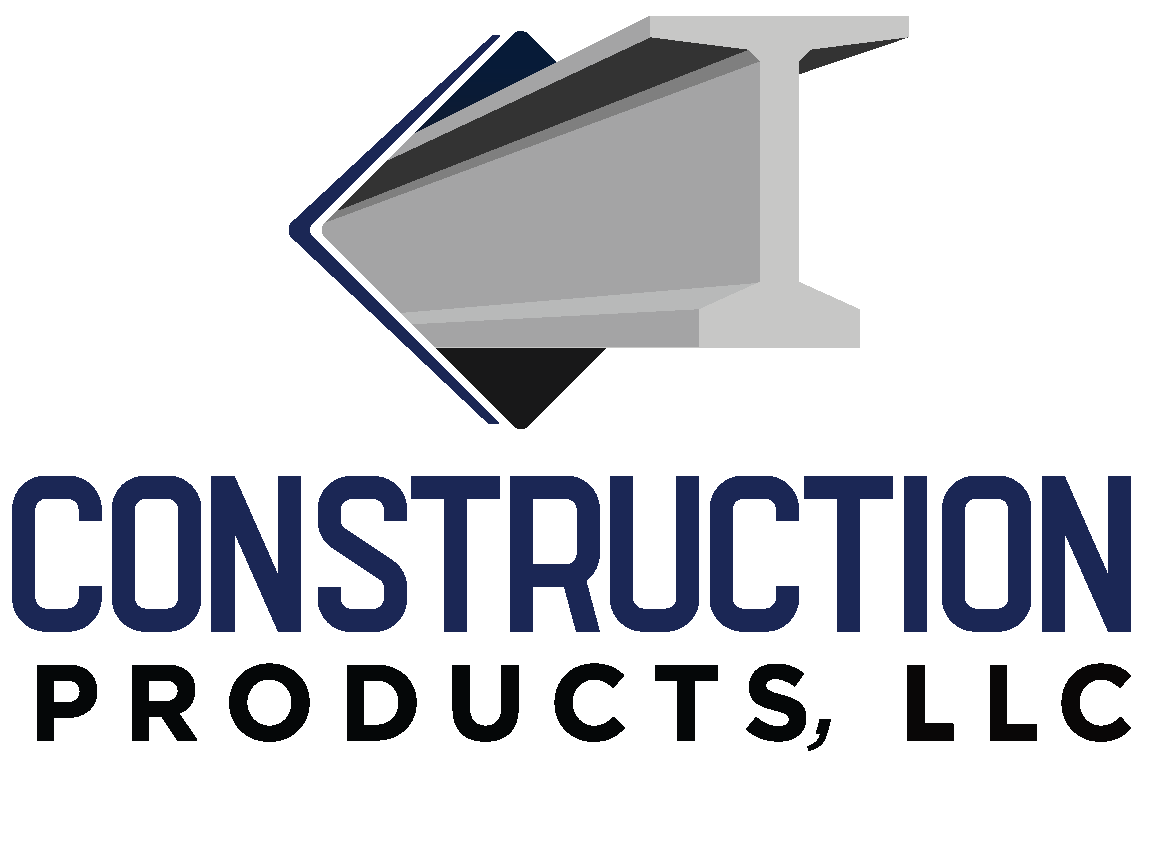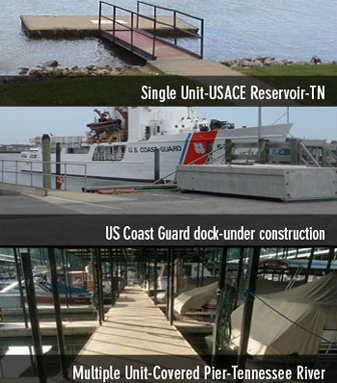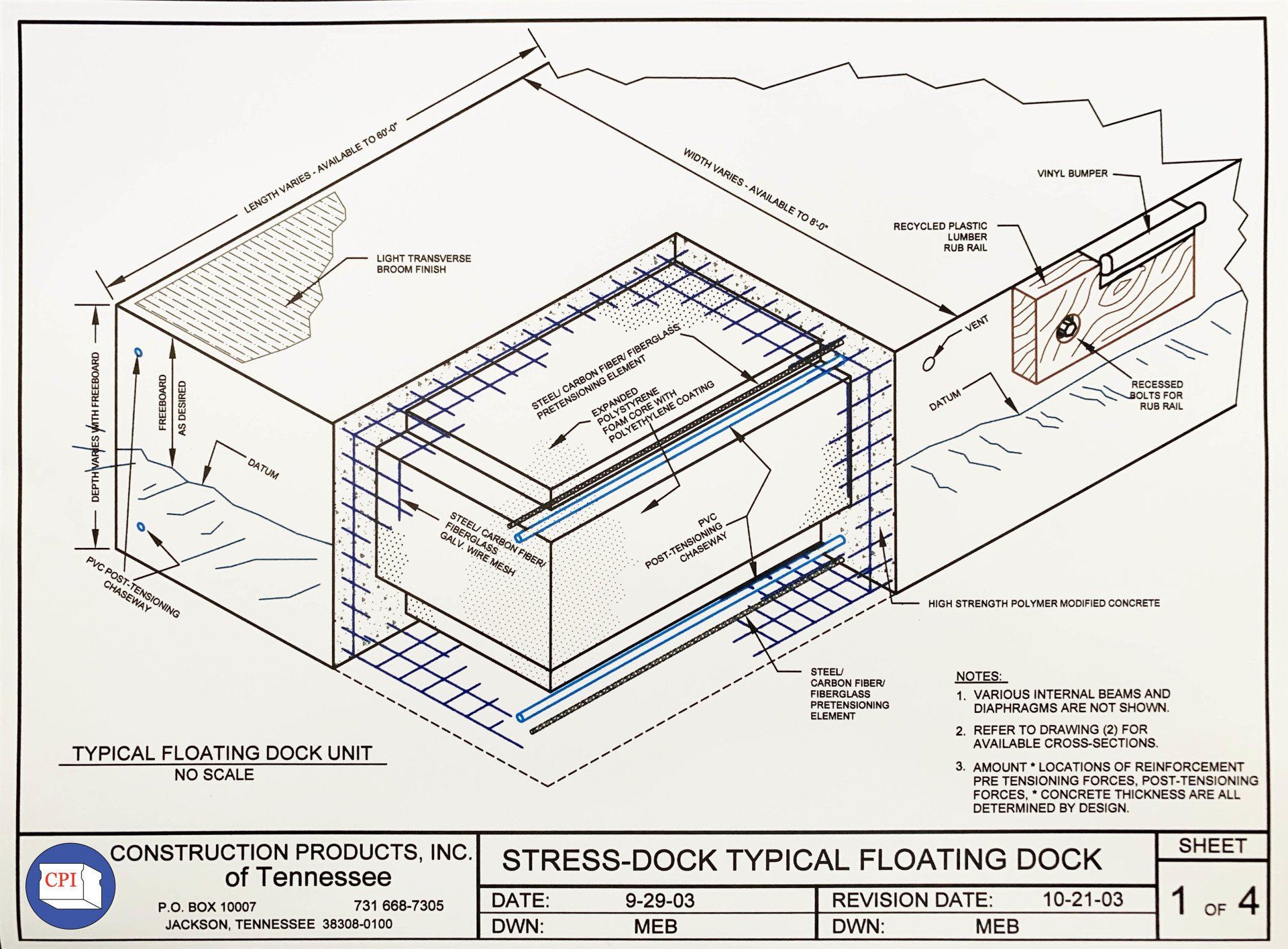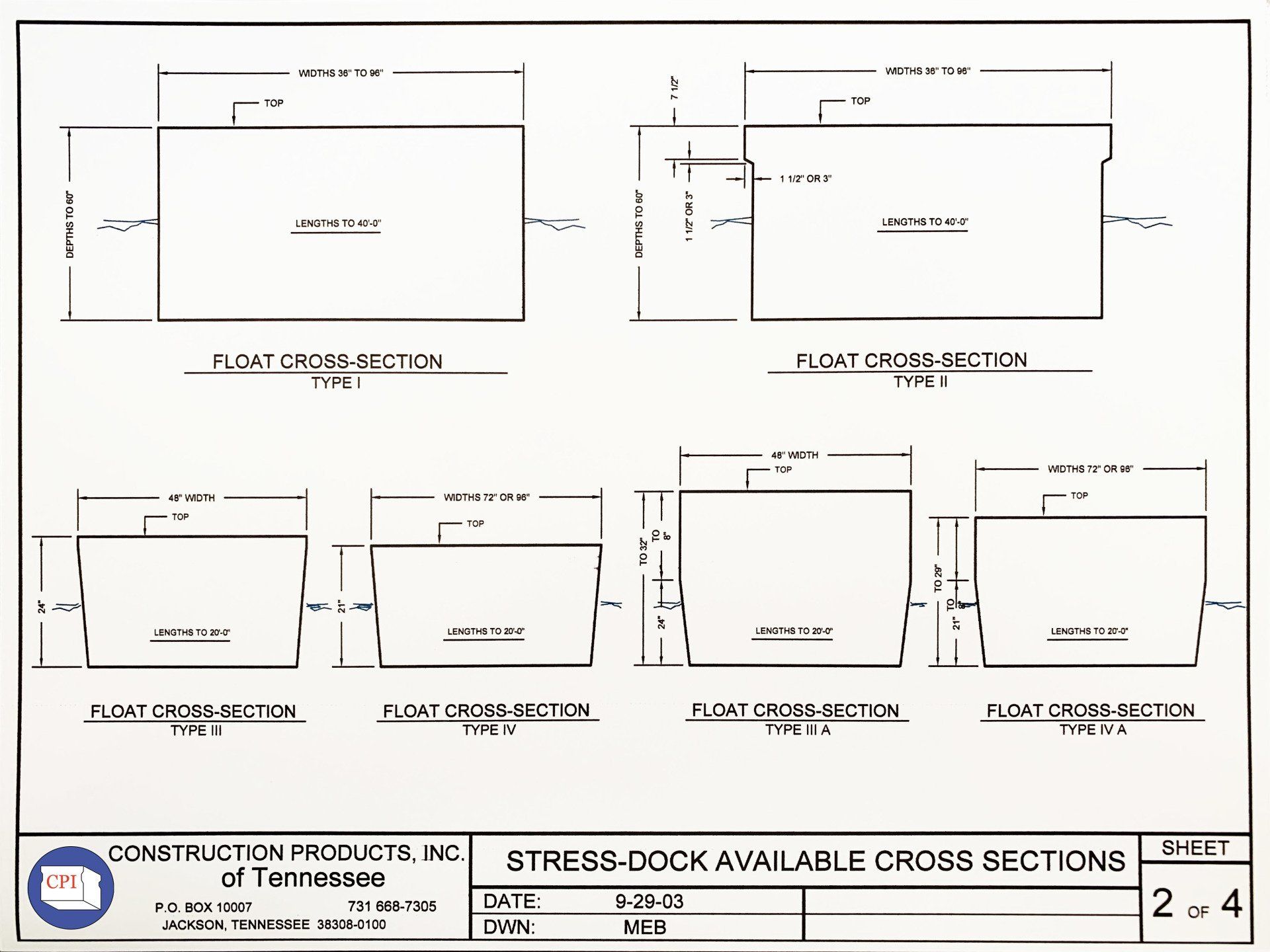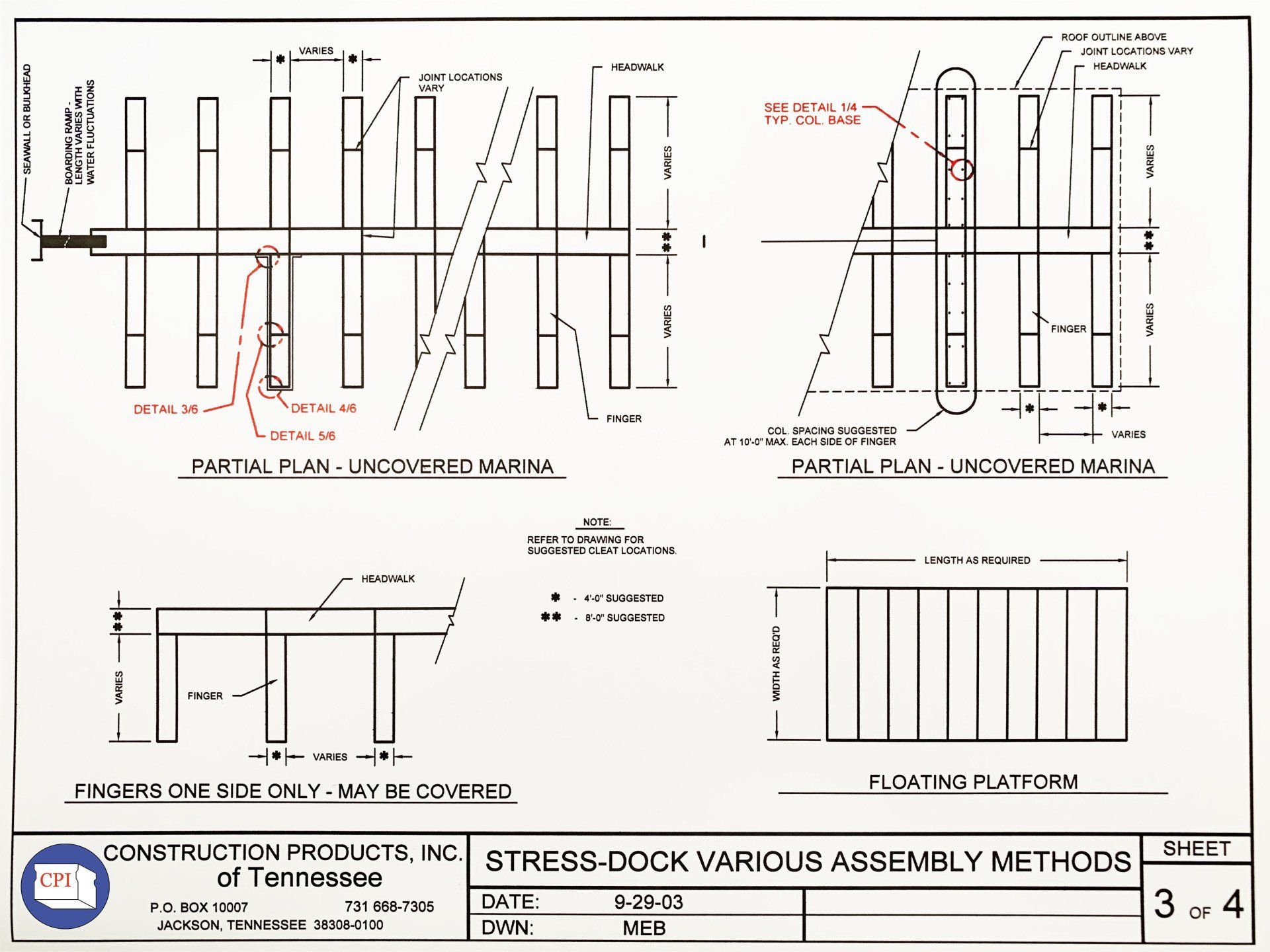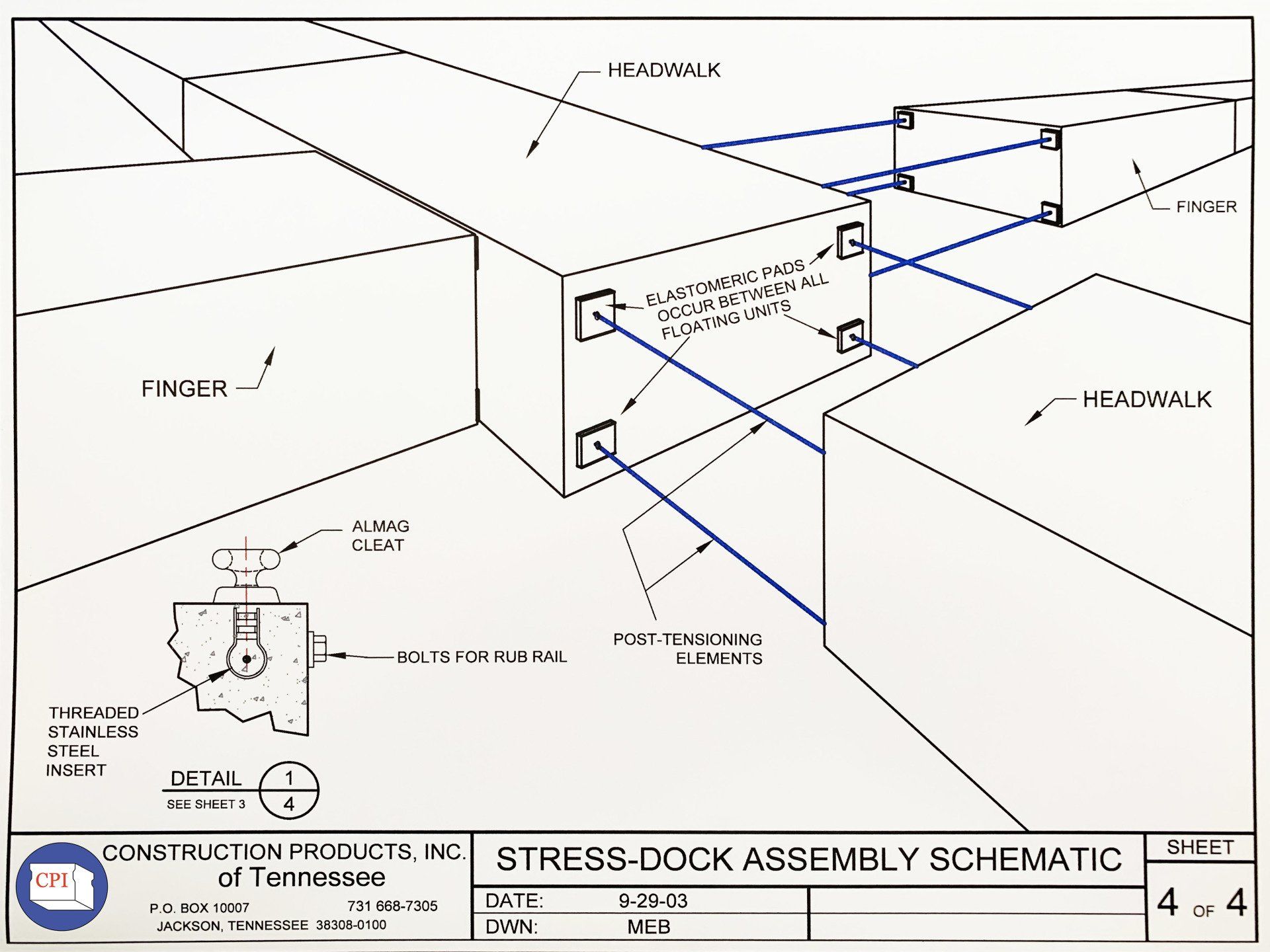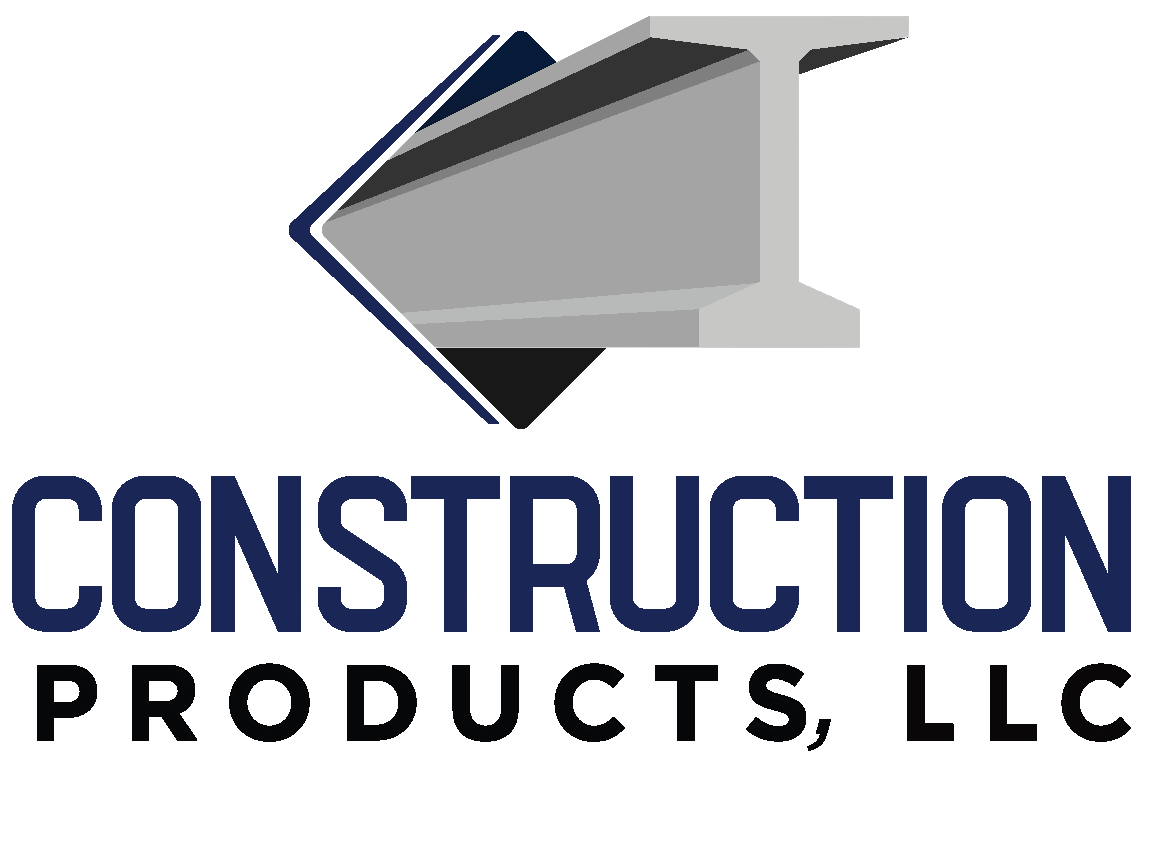ConcreteFloating Boat Docks
Pontoons & Concrete Floating Boat Docks
Long-lasting marina dock system
Our patented Stress-Dock™ is a dock with the comprehensive strength of concrete and the tensile strength of steel. The precast-prestressed floating dock systems are low maintenance, will last for decades, and provide a clean, uniform appearance to any marina.
Concrete, being impervious to attack from ultraviolet light, petroleum products and hungry animals, is long lasting. Those three items wreak havoc on the floating foam of some marina systems. CPI’s floating concrete boat docks last for an indeterminate length of time. For example, Construction Products installed the still-functioning docks in Baltimore Harbor in 1975.
The docks are prestressed and reinforced with a combination of galvanized steel and reinforcing fabric. A system of pipes and cables allow the floating docks to be linked together. Construction Products customizes the docks differently for fresh and salt water applications. Installation can be provided or CPI can work with the marina’s contractor.
Construction Products works in conjunction with architects and engineers in marina design. The custom-built docking system is shipped in sections for on-site assembly.
Patented Stress-Dock™ System
Wade Thomson developed a patented concrete floating boat dock trademarked as Stress-Dock™ in 1973, and we have been incorporating improvements ever since. This successful docking system can be seen at:
- Baltimore Inner Harbor Marina - Baltimore, Maryland
- U.S. Corps of Engineers – Cumberland River locations
- Riverside Park - Nashville, Tennessee
- Titans' Football LP Field Stadium Mooring Facility - Nashville, Tennessee
- Kentucky State Parks
- Tennessee State Parks
Stress-Dock™ Advantages
The newest patent version of the Stress-Dock™ incorporates many improvements that create a corrosion-resistant dock system by utilizing engineered fabrics and fibers for a rust-free structure.
Advantages of our patented design include:
- Strong & Durable
- Lifespan of 25 years or more
- Corrosion Resistant
- Rust-free Engineered Fabrics & Fibers
- Easy Installation
- Perfect for Harsh Environmental Conditions
- Low Maintenance
